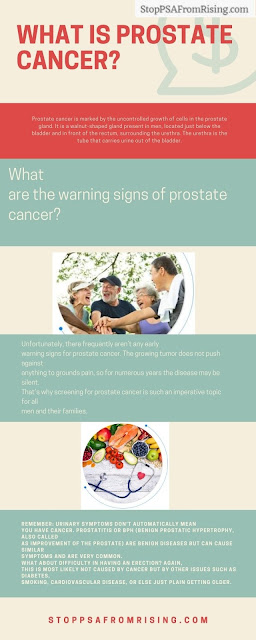Four stages of Prostate Cancer explained – Stop PSA from Rising
Prostate
cancer is one of the most common cancers that affect men worldwide. Usually, it
grows slowly in a walnut-shaped gland under the bladder.
With
that, the prostate secretes seminal fluid that further provides nutrition for
and allows the transport of sperm.
What are the diverse stages of prostate cancer?
1.
In stage 1, the tumor is non-detectable by an imaging test or a physical
examination. It also indicates that prostate cancer has not spread outside of
the prostate. In the first stage, the discovery of prostate cancer at this
stage is almost 80%, with a 5-year survival rate of almost 100%.
2.
In the second stage, the tumor may or may not be detected easily by a
physical examination or imaging or imaging test and yet has not developed
outside of the prostate. Also, at this stage, the cells have a larger Gleason
score and may spread more quickly.
3.
By stage 3, cancer now spreads beyond the prostate and may reach to the
nearby seminal vesicles. Also, at this stage, some facts reveal some stage-4
prostate cancer symptoms while they have other advanced indicators.
4.
At the final stage, the tumor has already spread to other parts of the
body, including the lymph nodes, lungs, liver, bones, or bladder.
How to deduce the evolution of prostate cancer?
Prostate
cancer evolution is based on a number of different factors which include
prostate cancer screening tests like a digital rectal exam or prostate-specific
antigen or PSA test. Along with that, imaging studies like bone scans, MRIs, CT
scans, and trans-rectal ultrasounds.
In
order to conclude the stages of cancer, doctors start by using the TNM which is
a staging system that is used by doctors and experts. Let us look at TNM each
one of them.
T – the
category estimates the size and extent of the Tumor
N – it
tests whether and how far cancer has spread to the lymph nodes
M –
this stage is to check that cancer has spread to other organs in the body and
is also called Metastasis.
If you
want more information regarding how to go about prostate cancer, then please
visit our official website!



Comments
Post a Comment